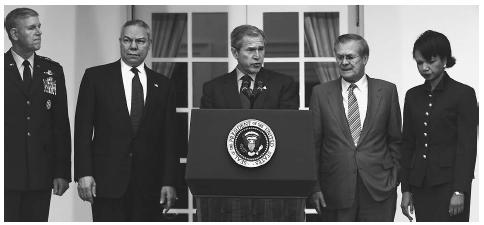Antiballistic Missile Treaty
█ LARRY GILMAN
The Antiballistic Missile (ABM) Treaty was signed by the United States and the Soviet Union (U.S.S.R.) in 1972. The treaty was one of two treaties produced by the first series of Strategic Arms Limitation Talks (SALT I) between the two countries; the other was an interim agreement limiting offensive nuclear weapons. The ABM treaty strictly limited the deployment—by both sides—of interceptor missiles, missile launchers, radars, and other devices designed to destroy ballistic missiles or their components in flight. In the original version, each nation was permitted to retain a limited number of ABM radars and no more than 100 ABM interceptor missiles at each of two circular sites 186 miles (300 km) in diameter, one centered on the nation's capital and the other on a cluster of ballistic-missile launch sites. A 1974 amendment reduced the number of permitted ABM sites to one per side and further bound both countries to not deploy ABM systems outside their own territory (e.g., at sea or on the territory of allies). In 1975, the U.S. dismantled its sole ABM system, SAFEGUARD; the U.S.S.R. (and, later, the Russian Federation) retained a single ABM system centered on Moscow. In 1997, further minor revisions were agreed upon, but never ratified by the U.S. The U.S. withdrew from the ABM treaty in July, 2002, and it is no longer binding on any country.
In the U.S., critics urged withdrawal from the ABM treaty soon after it was signed. They argued that it was ridiculous to prevent nuclear war by limiting defense against the primary means for delivering nuclear weapons to their targets. The Reagan administration, for example (1980–1988) sought to deploy an ambitious missile-defense system ("Star Wars") that would have required abrogation of the ABM treaty. However, supporters of the ABM treaty defended it successfully throughout the 1980s and 1990s based primarily upon the concepts of mutual deterrence, mutual destruction, and first-strike capability.
Since the 1950s, the U.S. and the Soviet Union (U.S.S.R.) possessed enough nuclear warheads mounted on ballistic missiles (and additional thousands on other delivery systems, such as bombers) to destroy each other many times over. Aggression by each side was, in theory, deterred by fear of the other side's weapons; if either side attacked, both attacker and attacked would be destroyed.

This policy—often termed Mutually Assured Destruction—was unstable to the extent that a "first strike" by one side was able (or was perceived as being able) to destroy the other side's missiles in their silos, eliminating most of that country's ability to retaliate. If such a strike were successful, the country to strike first might prevail. Building defenses against ballistic missiles, most arms-control experts assumed, would make this situation even more unstable for several reasons. First, it is impossible to build a system of antiballistic-missile weapons that can reliably protect most of the civilian population of any nation from a determined nuclear attack. (2) A partially effective shield, however, might serve to protect a nuclear aggressor from the effects of a weak counterattack. (3) Possession of such a partial defensive system would, therefore, make a first strike more attractive to the nation possessing it. (4) Finally, if one side built such a partial system, the other, knowing that a first strike had become more attractive to side possessing the partial ABM system, would have even more incentive to strike first itself (against the enemy's ABM system as well as its offensive nuclear weapons), and place itself on hair-trigger alert against attack, making accidental nuclear war more likely. The ABM treaty was designed, signed, and ratified by the U.S. and U.S.S.R. in order to prevent destabilization of this type.
The Reagan administration was prevented from developing a Star Wars system by domestic political resistance centered on the ABM treaty and on skepticism about the technical feasibility of the Stars Wars concept itself. However, the project has been funded by all succeeding administrations, and has now been fully revived under President George W. Bush. In December 2001, the United States gave six months' notice of its intent to withdraw from the ABM treaty, as provided for by the terms of the treaty itself. The U.S. officially withdrew from the treaty in July, 2002. A few days later, work began on a U.S. missile shield, with ground-breaking ceremonies at Fort Greeley, Alaska for a test-bed ABM system consisting of six interceptor missiles.
China, which at present has only about 20 intercontinental-range, land-based ballistic missiles, has stated that it is able to build offensive systems capable of overwhelming any ABM system deployed by the United States.
█ FURTHER READING:
BOOKS:
Alves, Péricles Gasparini. Prevention of an Arms Race in Outer Space. New York: United Nations Institute for Disarmament Research. 1991.
ELECTRONIC:
Stoullig, Jean-Michel. "ABM Treaty Ends, U.S. Open to Experiment on Missile Defense." Agence France-Presse (in SpaceDaily.com). June 13, 2002. < http://www.spacedaily.com/news/bmdo-02l.html > (December 9, 2002).
"Treaty Between the United States of America and the Union of Soviet Socialist Republics on the Limitation of Anti-Ballistic Missile Systems, 944 U.N.T.S. 13." Nuclear Age Peace Foundation. 2002. < http://www.nuclearfiles.org/docs/1972/720526-abm.html > (December 9, 2002).
Comment about this article, ask questions, or add new information about this topic: